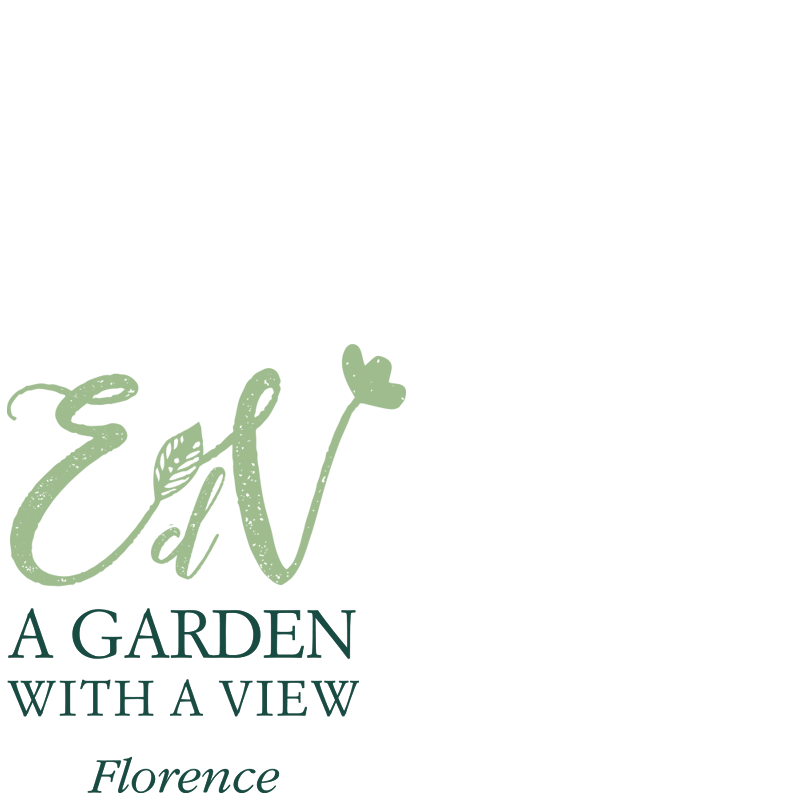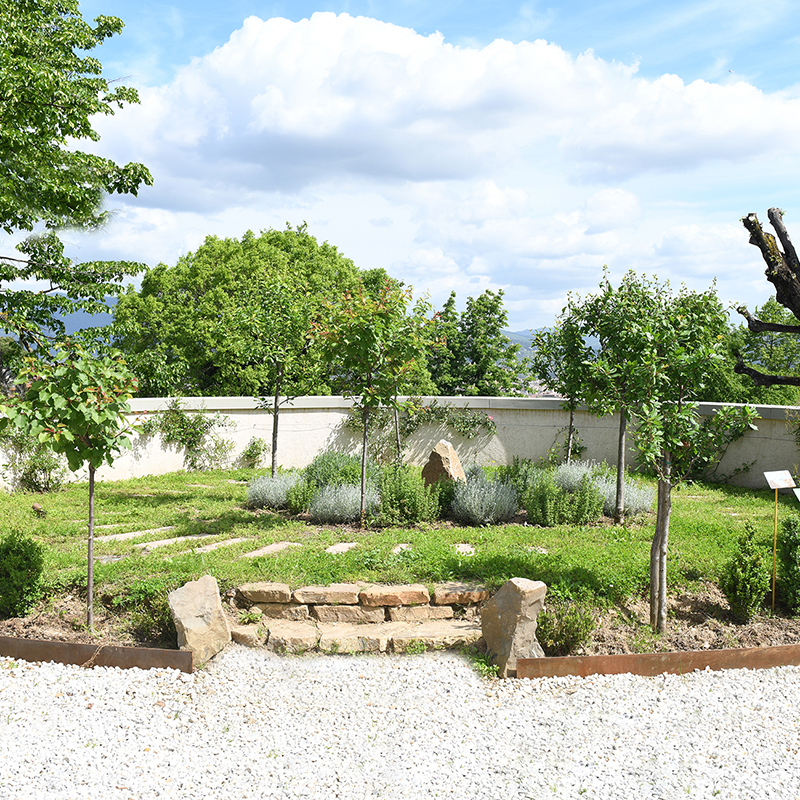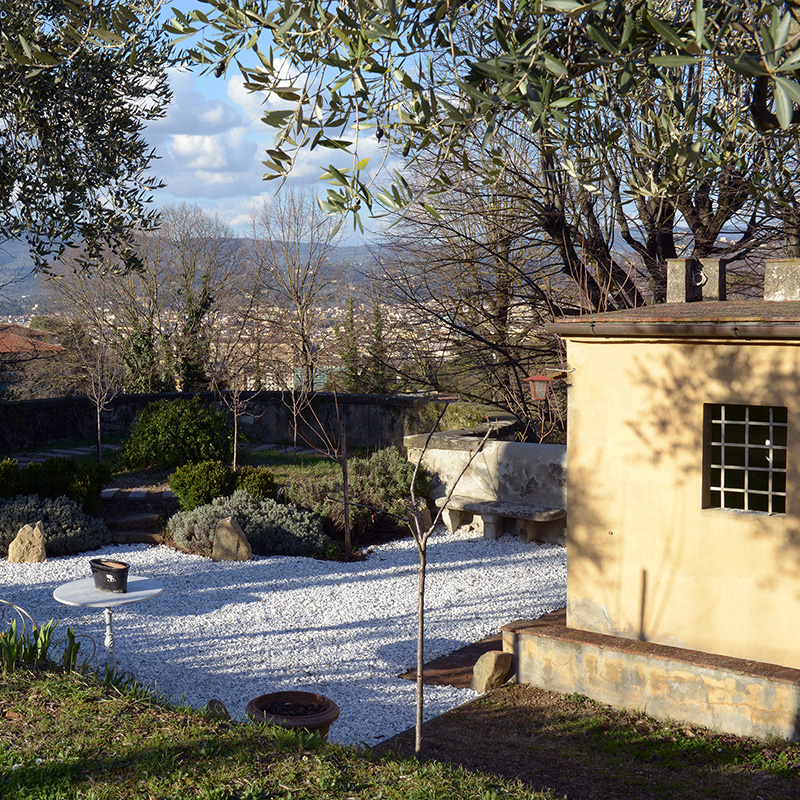1. Plum Tower
The garden is accessed through an old numberless iron door next to the tower that was built by the famous architect Poggi at the time when Florence served as the capital of Italy, around 1865. Upon entering, you’ll find three steep sets of stairs excavated through the big wall that surrounds the hill, and you’ll suddenly arrive in the garden. I wanted to welcome the visitor with an open space of white gravel, surrounded by four quiet sentinels: apricot trees. I choose white gravel because I wanted to reproduce those white glass balls that you buy in shops, in which it snows even if outside the sun is shining.
The Vision
Even if you step from a boulevard to the countryside in the blink of an eye, that small door has been there, guarding the entrance of the garden for more than 100 years – since my grandma put it there first. This rite of passage sets the beginning (and the end) of the itinerary that spans on the inside of the private garden. The hill where the garden is located is between Arcetri’s hills and San Miniato al Monte.
Plants used
Apricot (prunus armeniaca)
Boxwood (buxus sempervirens)
Cotoneaster (cotoneaster lacteus)
Cypress (cupressus sempervirens)
Honeysuckle (lonicera caprifolium)
Iris (iris germanica)
Laurel (prunus laurocerasus)
Lavender (lavandula angustifolia officinalis)
Marjoram (origanum majorana)
Narcissus
Olive tree (olea europaea)
Plum tree (prunus domestica)
Re-flowering Shrub Rose in clusters
Rosemary (rosmarinus officinalis)
Sage (salvia officinalis)
Viburnum Tinus
Seasonal blooms: (Begonia, Pansé)



